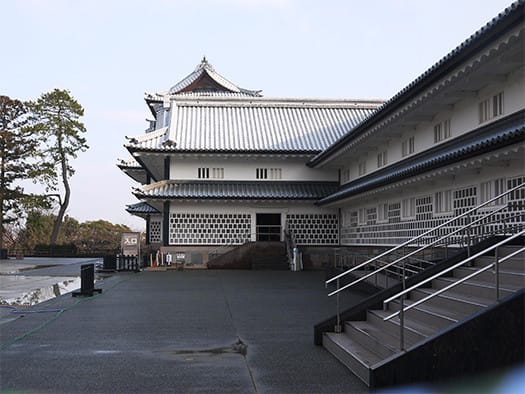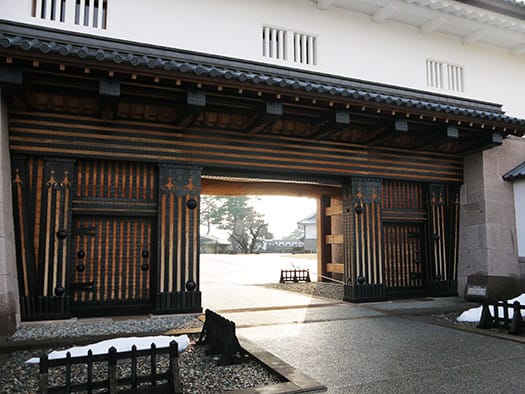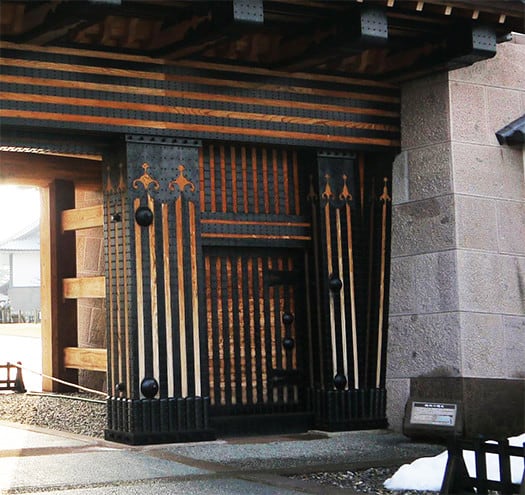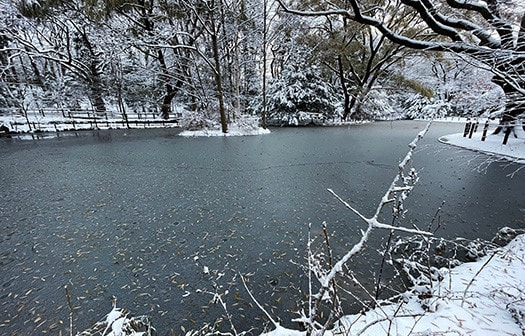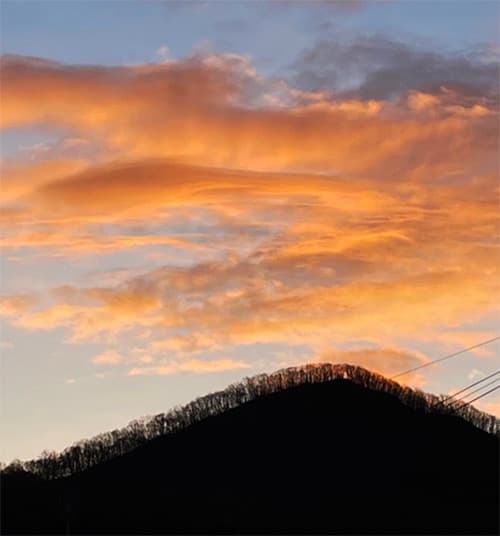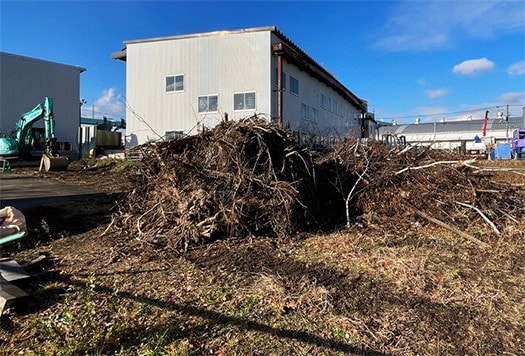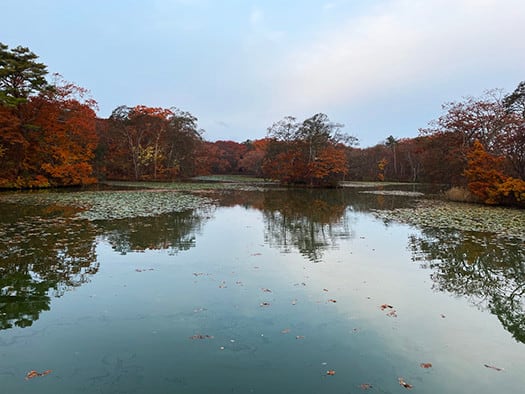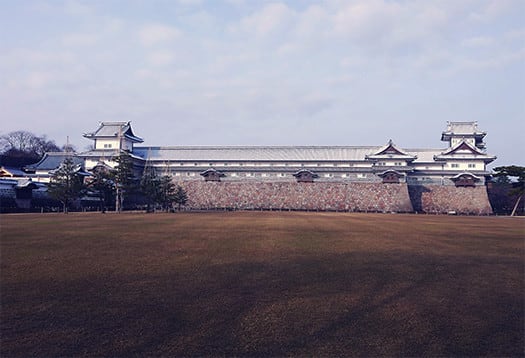
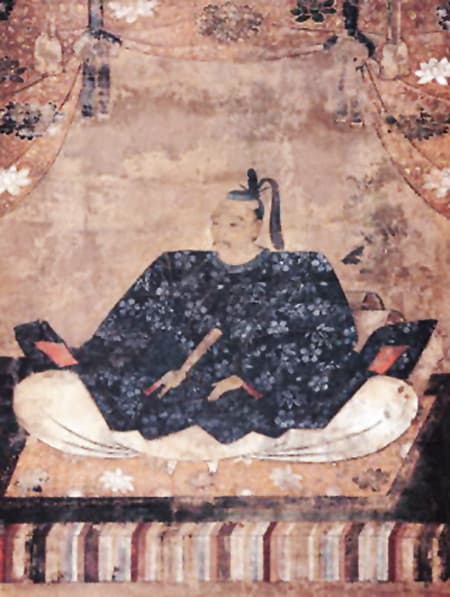
1580年に柴田勝家・その配下の佐久間盛政はこの金沢城の前身であった本願寺支配の金沢御堂を攻撃し占領した。一向宗側の拠点としてはその南方55kmほどの「吉崎御坊」に撤退したのか、御堂とか、御坊とか、戦国期の宗教勢力の軍事的・宗教的拠点は、あんまり教科書的歴史では表側に出てこないけれど、その時代にとっては相対的には「民衆側」とも言える動きは興味深い。
わたしの家系伝承の兵庫県姫路市の英賀でも「英賀御堂」という宗教拠点が巨大な権力を行使していた様子がわかるのだけれど、たぶん現代でも一定の社会的影響力を持っている宗教勢力のことなので、客観的な分析把握が十分になされてこなかったように思える。しかし人類史のなかで宗教がひとびとの営為に深く関わり決定的な要素でもあったことを考えると、かならずしも科学的な歴史把握とは言えないと思う。信長という存在は、いま読んでいる「死は存在しない」という最先端量子科学者の論説をみても、興味深い「日本史」だと思える。日本歴史としては、比叡山を焼き討ちしこの一向宗をも制圧した「中央軍事政権」が、宗教勢力と妥協しつつも徳川幕府体制にむかって成熟していった。世界史の中でも特異であるのかも知れない。
で、柴田勝家軍と秀吉軍との織田権力内闘争、軍事衝突を経て、そもそも柴田側からの裏切り分子であった前田利家が、賤ヶ岳戦役の戦後論功行賞の結果、1583年になって金沢城に入城する。その後の政治情勢の中で常に独特の「風見鶏」能力を働かせて、前田家は加賀100万石の領主として幕末まで永らえることに成る。
利家は大がかりな城郭の整備事業にとりかかり、本丸天守閣創建や周辺の石垣建築などに取り組んだとされている。この写真の五十軒長屋という不思議な美感の建築は、周辺石垣上に位置している。金沢城にとっての次の1596-1615年にわたった築城工事では、キリシタン大名として知られ秀吉によって「追放」された高山右近が、その最新の軍事要塞技術を傾けてあたったとされている。
大航海時代のなかで日本の政治軍事情勢は、その大きな舞台になっていたとされる。ヨーロッパにおける政治軍事情勢が大きく日本の状況にもかかわり、同時に世界史のなかでも大きな焦点でもあった様子が伝わってくる。
この五十軒長屋は、建築としても個性的でちょっと不思議な「個性」を伝承しているように思う。現代の建築家でいえば安藤忠雄的な面白みを感じさせ、その単純造形ぶりに強く惹かれる。
English version⬇
Toshiie Maeda's Entry into the Castle and the Interesting Architecture of “Gojuken Nagaya” Kanazawa Castle-3
Kanazawa Castle, a religious castle, was overrun by the centralized power and transformed into a modern castle with a castle tower. The site of Ukon Takayama, a member of the Maeda family with 1 million koku. The...
In 1580, Shibata Katsuie and his subordinate Sakuma Morimasa attacked and occupied the Honganji-controlled Kanazawa Godo, which was the predecessor of this Kanazawa Castle. The Ichikyusho sect retreated to “Yoshizaki Gobo,” 55 km south of the castle. Gobo and other military and religious bases of religious forces in the Warring States period do not appear much in textbook histories, but it is interesting to note that they were relatively “popular” during that period.
In my family tradition of Eiga in Himeji City, Hyogo Prefecture, we can see how a religious center called “Eiga Godo” exercised enormous power, but since it is a religious force that probably has a certain social influence even today, it seems that it has not been sufficiently analyzed objectively. However, considering the fact that religion has been deeply involved in human activities and has been a decisive factor in human history, I do not think that this is necessarily a scientific understanding of history. The existence of Nobunaga is an interesting aspect of “Japanese history” in light of a cutting-edge quantum scientist's theory that “death does not exist,” which I am currently reading. As for Japanese history, the “central military government” that burned down Mt. Hiei and suppressed the Ikkyu sect, matured toward the Tokugawa shogunate system while compromising with the religious powers. This may be unique in the history of the world.
After the struggle and military clash between the forces of Katsuie Shibata and Hideyoshi, Toshiie Maeda, who had been a traitor from Shibata's side, entered Kanazawa Castle in 1583 as a result of his meritorious deeds after the Battle of Dokogatake. The Maeda family, always exercising their unique “weathercock” ability in the political climate that followed, would endure as the lords of Kaga's 1,000,000 goku (one million koku) until the end of the Edo period.
Toshiie is said to have undertaken a large-scale castle construction project, including the construction of the castle tower and stone walls around the castle. The curious and aesthetically pleasing structure known as the “Gojyuken Nagaya” in this photo is located on the surrounding stonewalls. The next phase of Kanazawa Castle construction, from 1596 to 1615, is said to have been undertaken by Takayama Ukon, a Christian feudal lord who was “banished” by Hideyoshi, but who used his latest military fortification techniques.
In the Age of Discovery, the political and military situation in Japan is said to have played a major role. The political and military situation in Europe had a great deal to do with the situation in Japan, and at the same time, it was a major focal point in world history.
The 50-house row houses are unique in terms of architecture, and seem to have inherited a somewhat mysterious “individuality. The simplicity of its form is very appealing to me, and it gives me a sense of interest in the manner of Tadao Ando, a contemporary architect.













